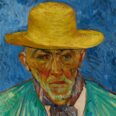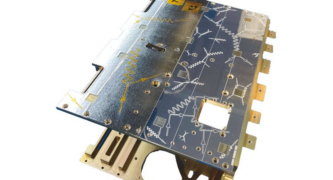

One of NASA’s newest spacecraft to reach orbit features artwork that is close to home: stylized depictions of Feynman diagrams, laser-etched into the outer emissivity skin of the PACE-1 6U satellite.
The PACE-1 satellite is part of NASA’s Payload Accelerator for CubeSat Endeavors (PACE) Initiative, a project to test a series of potential payloads for cubesats, which are tiny modular satellites. In addition to its scientific mission to assess how well certain technologies can survive the harsh environment of space, PACE-1 features an orbital art exhibition. Artists Arno Geens, Selby Sohn, Mike Dabro, and Steven M. Johnson each created work that was specially commissioned for this mission, then curated and integrated by NASA Ames Spacecraft Systems Designer Luke Idziak.
Geens, a designer and former visual strategist at JPL, which Caltech manages for NASA, created the section of the artwork that drew inspiration from diagrams created by the late Richard Feynman, professor of physics and Nobel laureate.
“Feynman developed a uniquely elegant and creative visual language to depict an intrinsically complex process,” Geens says. “His diagrams depict the interaction of subatomic particles, such as the kind that would occur from radiation affecting a satellite’s scientific payload. By honoring them as true works of art, his diagrams directly reflect the satellite’s objective.”
The spacecraft engineering team, artists, and Idziak collaborated to determine how to etch art onto the side of the cubesat without affecting its ability to perform its job. “We wanted to find a way to depict invisible things happening inside the spacecraft; to show vanishingly small processes—particle collisions—through an artistic medium that could be accessible to wide audience,” he says.
Idziak sees the artwork as both a continuation of NASA’s legacy of art in space, which includes the Voyager Golden Record, and an homage to the bygone era of objects that are functional and creative, such as illuminated medieval manuscripts.
“Every spacecraft is a custom-built creation, with countless hours of effort distilled into it,” Idziak says. “By including artists in the development process, we have an opportunity to make new spacecraft not only functional, but beautiful and engaging to a wide audience as well.”—ROBERT PERKINS














 0 comments
0 comments


